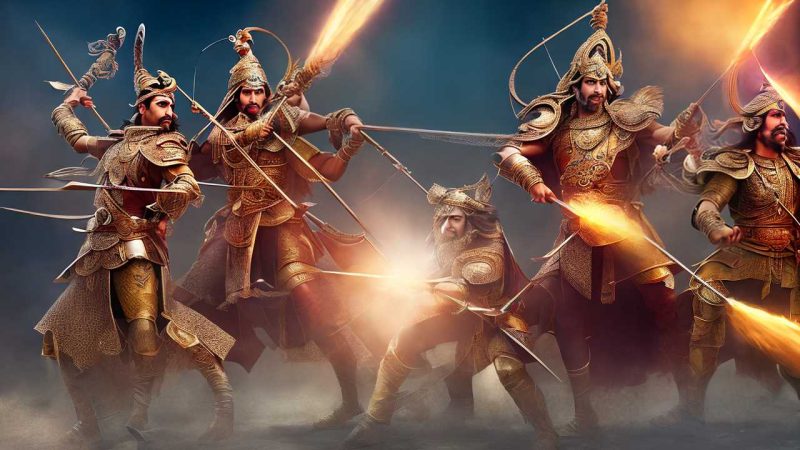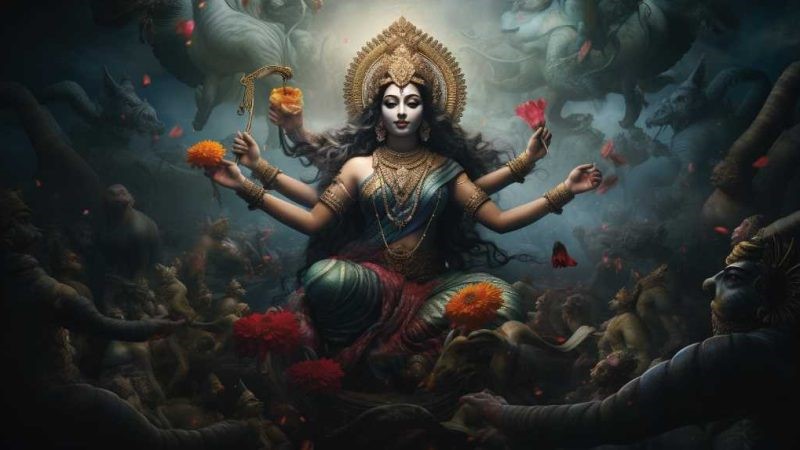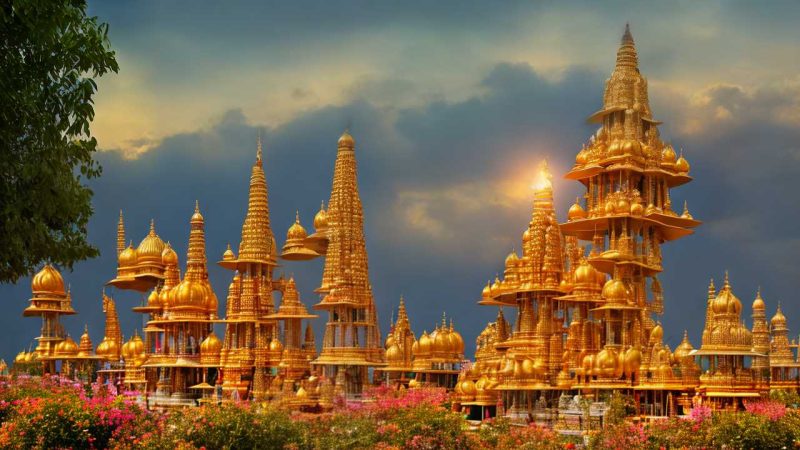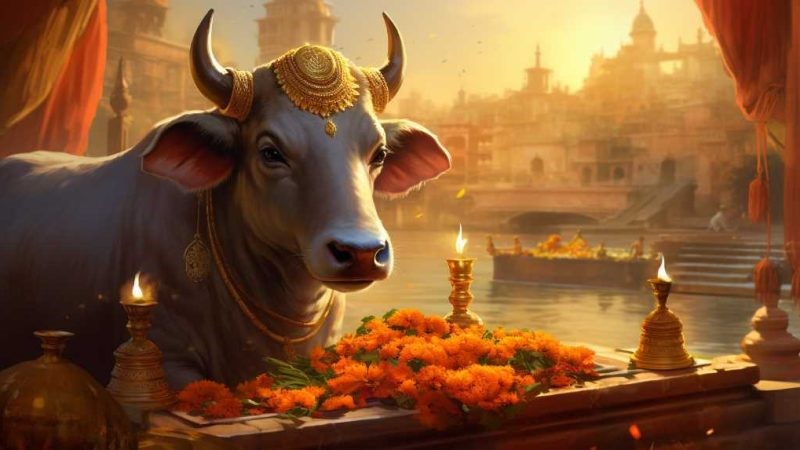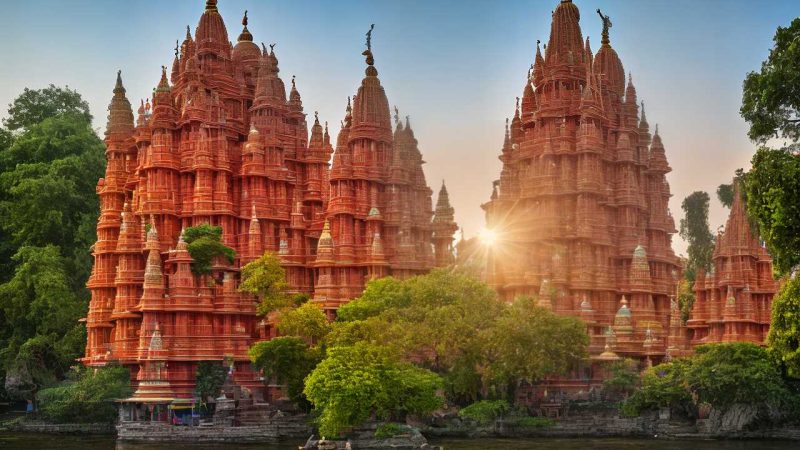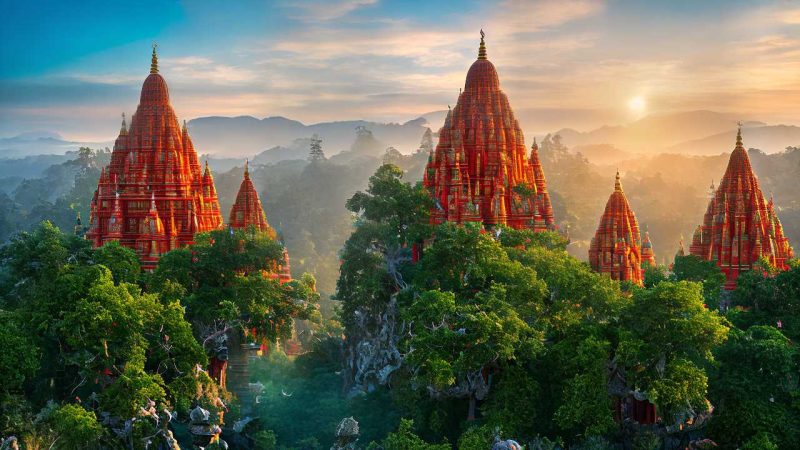The Spiritual Heart of Karnataka Hindu Festivals
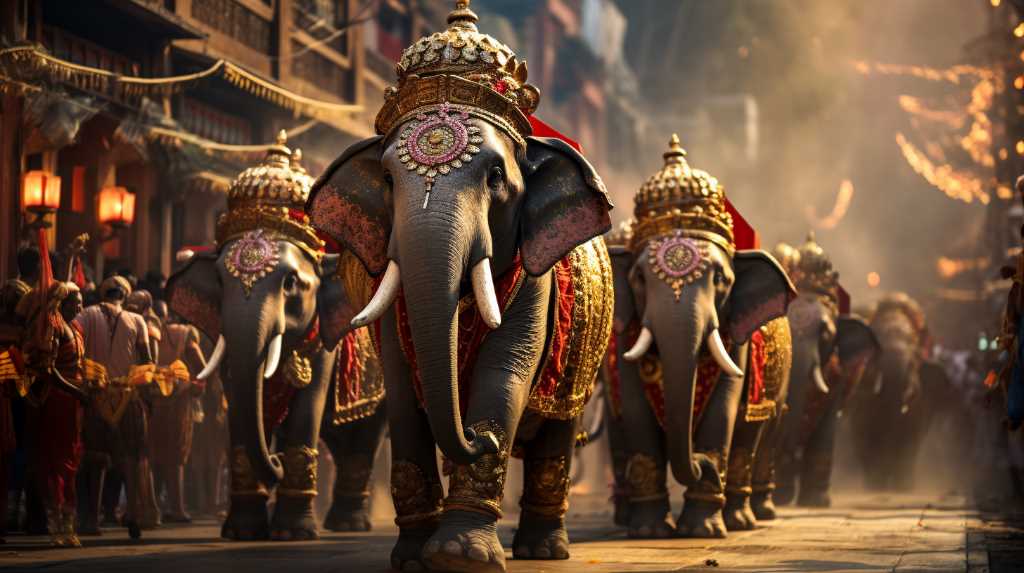
Karnataka’s Hindu festivals are a colorful display of the state’s spiritual roots and cultural beauty. When you go through the various festivals, like the royal Mysore Dasara or the more personal Krishna Janmashtami in Udupi, you really feel the religious excitement in the air. Each celebration has its own special practices and stories, and it’s not just a show, but a chance to delve into the history of faith and customs handed down over time. The heart of Karnataka is alive with these festivals, showing us what makes this place special – where gods and people seem to come together.
However, there’s more to these events than just the outward show. They invite those who are interested to dig deeper and understand what these traditions truly mean.
Let’s take Mysore Dasara as an example. This ten-day festival isn’t just a big party; it’s a historic event that honors the goddess Chamundeshwari and celebrates good over evil. The festival ends with a grand procession featuring elephants and a display of the goddess’s idol, which draws visitors from all over. It’s a perfect chance for people to see Karnataka’s royal heritage up close.
Mysore Dasara: A Regal Celebration
Mysore Dasara is a famous and lively festival in the Karnataka area that attracts thousands of people every year. It lasts for ten days and ends on Vijayadashami, celebrating the victory of good over evil.
The festival is well-known for the brightly lit Mysore Palace and a large parade with decorated elephants. It’s not just a feast for the eyes; it also helps the local economy by bringing in tourists and helping local artisans sell their crafts.
The events during Dasara mix traditional and modern performances, which shows off the wide range of art from Karnataka. It’s important because it keeps the local culture and history alive.
The festival is well-organized every year, which helps maintain the area’s cultural identity.
Hampi’s Chariot Festivities
Every year, the old city of Hampi comes alive with its Chariot Festival. This important event is a big part of Karnataka’s festival schedule. It’s about honoring Hindu stories, especially the god Lord Vitthala, who is said to be another form of Lord Vishnu.
The main attraction is the parade with a beautifully decorated chariot. This chariot is made with great care to show the sacred and historical importance. Many people gather to pull the chariot as part of a religious practice, while music and chanting fill the air, adding to the holy feeling.
This festival is a big deal because it keeps Hampi’s traditions alive and draws visitors who want to see the culture for themselves.
The festival is important because it helps keep the local culture strong and introduces it to others. For example, when the chariot is pulled through the streets, it’s not just a show. It’s a way for people to show how much they care about their beliefs and traditions. Plus, tourists who come to watch get a firsthand look at Hampi’s history and way of life.
This mix of faith and culture makes the Chariot Festival a time to look forward to every year in Hampi.
Udupi’s Krishna Janmashtami
During Krishna Janmashtami, the city of Udupi in Karnataka comes alive with excitement and worship. This festival celebrates the birth of Lord Krishna and is a time when people show their deep religious devotion. Everyone gathers at the famous Krishna Temple, the center of all the religious events.
One of the main attractions is ‘Mosaru Kudike’ or ‘Dahi Handi.’ In this event, people form tall human pyramids to reach and break a pot full of curd, which is a fun way to remember how Krishna used to steal butter. Understanding this festival helps us see how it keeps social peace and strengthens people’s sense of belonging to their religion. It also helps pass down important cultural and spiritual lessons to the next generation.
Here’s why it’s important: festivals like Krishna Janmashtami bring people together and remind them of their shared beliefs and history. This festival, in particular, is a chance for everyone to dress up, have fun, and learn more about their culture. It’s special because it combines respect for tradition with a sense of community and joy. By forming human pyramids, people work together and show that they can achieve great things as a team, just like how they aim to maintain harmony in their community.
Holi: A Spectrum of Devotion
Just as the joyous celebrations of Krishna Janmashtami reflect the cultural unity and religious fervor of Udupi, Holi, with its vibrant colors, exemplifies the diversity of Hindu devotional practices across Karnataka.
This festival, marking the arrival of spring, is not only a visual spectacle but also a symbolic representation of good triumphing over evil.
In Karnataka, the celebration of Holi is infused with local traditions, and regional variations are apparent.
The analytical dissection of these practices reveals a pattern of syncretism—where ancient rituals and contemporary customs blend seamlessly.
Social structures and historical influences have shaped the way Holi is observed, with each community adding its unique hue to the festivities, thus creating a mosaic of devotion that is both complex and inclusive.
Deepavali: Illuminating Traditions
Deepavali, also known as Diwali, lights up Karnataka during autumn. This festival is all about celebrating knowledge and the victory of light over darkness. It comes from stories in Hinduism that talk about good winning over bad.
In Karnataka, people celebrate Deepavali for a few days, and each day has special things people do. The first day is called Naraka Chaturdashi. On this day, people remember how Lord Krishna defeated a bad demon named Narakasura. It’s a way to say that being good is better than being bad.
Everyone cleans their houses, which is like making our minds and hearts clean too. They light small clay lamps and create colorful designs called rangoli at their doorsteps.
Looking closely at Deepavali traditions in Karnataka shows us a rich mix of culture. It brings people together and gives everyone a fresh start.
Conclusion
Karnataka’s Hindu festivals are an essential part of its cultural and religious life. The famous Mysore Dasara shows off the state’s royal past with grand celebrations. In Hampi, people pull huge chariots in a vibrant event. Udupi is known for its heartfelt celebration of Krishna Janmashtami. Holi brings a splash of color, while Deepavali lights up the state with its bright festivities.
These events are important because they keep Karnataka’s unique traditions alive and share them with the world. They help people connect with their faith and each other, making the state’s cultural fabric stronger.

